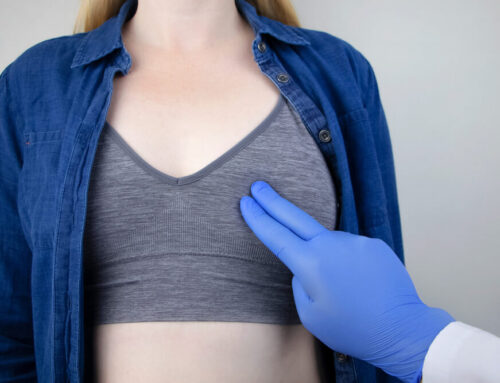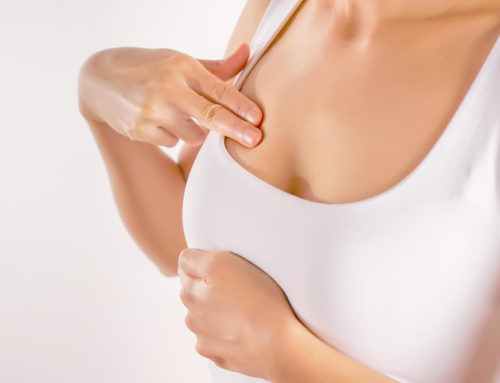Fibrocystic breast disease may make you feel worried and fearful, but knowing the facts about this condition may put your mind at rest. This article will inform you about all of the latest expert-approved facts about fibroadenoma, its signs and symptoms, common causes, treatment methods, and more. If you are ready to educate yourself on this condition and gain a deeper understanding of fibroadenoma, you are in the right spot. We’ve also included answers to some of the most frequently answered questions, such as where to receive diagnosis and treatment. Although the need for surgery is uncommon, it is possible. If you are located in the area or searching for the best professionals for this procedure, choose breast surgery in Palm Beach Country.
With that in mind, here are the essential facts about fibrocystic breast disease you need to be aware of.
Fibrocystic Breast Disease: The Term Explained
If you feel lumps in your breasts, you may be dealing with fibrocystic breast disease. This condition is often referred to as fibrocystic breasts (often called fibrocystic change), and it is not dangerous or harmful. However, it can raise the alarm in your head and make you believe that there is something more severe going on. Feeling worried and scared is entirely normal, especially when it comes to fibrocystic breast changes. When you are unaware of the causes and symptoms of this condition, you may believe it is cancer or that it can lead to cancer. If you have any questions or concerns, read about Advanced Surgical Physicians and book a consultation today.
Overall, over 50 percent of women will deal with fibrocystic breast disease during their lifetime. Although symptoms are common, many females do not experience any signs that could point to fibroadenoma.
Even if this condition is not dangerous, it can make breast cancer detection challenging. Again, we always suggest consulting a healthcare professional at a reliable clinic for expert diagnosis and possible treatment. Never disregard a health condition, even if it is benign, like fibroadenoma.
The Symptoms of Fibrocystic Breast Disease

Women with fibrocystic breast changes may notice some or all of the following signs and symptoms:
- Pain
- Tenderness
- Swelling
- A lump/s in both or one of the breasts
- Tissue thickening
Some females may experience various degrees of swelling. The symptoms may be worse before a menstrual cycle (due to the changes in hormone levels), but having the same severity of symptoms during the entire month is also common.
A breast lump can change in size, and it is typically movable. In some cases, these lumps can be fixed.
Certain patients can also experience underarm pain; others might have dark brown or green discharge from the nipples. If you have any fibrocystic breast changes and you notice bloody, red, or clear fluid from the nipples, contact your healthcare provider immediately. These changes are abnormal, and they could be potential breast cancer signs.
What Causes Fibroadenoma Changes?
The leading cause of fibrous tissue is hormonal changes in the body. Women with fibrous tissue in the breasts may have more distinct changes when responding to the ovary-produced hormones. As a result, these patients can experience a painful or tender breast lump.
While any female can experience this condition, it is most common in women who are in their 20s and 50s. Hormone therapy could increase the likelihood of developing a breast lump, while birth control pills could reduce it. Usually, the symptoms are resolved or improved after a woman reaches menopause.
Fibroadenoma and Cancer: Are They Related?
The biggest concern with fibrous tissue is that it is often falsely believed to be linked with cancer. However, the truth is entirely different. In reality, a breast lump does not boost your risk of cancer. However, the changes in the breast can make breast cancer diagnosis more challenging.
According to the U.S. Preventive Services Task Force, female patients between the ages of 50 and 74 should get a mammogram bi-yearly. Furthermore, the National Cancer Institute states that self-examining their breasts are also handy. We suggest getting more familiar with your body and how your breasts feel and look normal. This way, you will detect any unusual signs quickly and, if required, seek out professional assistance as soon as possible.
Diagnosing a breast lump as fibrocystic breast disease is simple and fast. Consult with your healthcare provider and get a physical breast exam. The professional will order an MRI, ultrasound, or mammogram to take a better look at the changes in the breasts. Experts recommend a digital mammogram for females with fibrocystic breasts, as the technology is helpful for more accurate imaging results.
In some instances, an ultrasound could help distinguish abnormal breast tissue from normal tissue. Rarely, you may require a biopsy for further analysis.
The biopsy is performed if the doctor suspects you may have a suspicious cyst in your breast. This quick procedure is performed by fine needle aspiration.
Treatment and Home Remedies for Fibroadenoma Breast Changes

Most patients with this condition do not need invasive treatment. In most cases, home remedies are readily available and enough to relieve the discomfort and pain associated with the lumps. For instance, patients may opt for over-the-counter painkillers like acetaminophen (Tylenol) or ibuprofen (Advil). These medications will help relieve any discomfort and pain quickly and effectively. Experts also recommend wearing supportive and well-fitting bras to reduce the tenderness and pain in the breasts. Another helpful remedy is applying cold or warm compresses to the area. By doing this, you will relieve the swelling and pain you may be experiencing.
Another effective way to deal with the swelling, tenderness, and pain associated with this condition is to be mindful of what you consume daily. Making healthier dietary changes is critical for your well-being. Some patients found that reducing or completely eliminating caffeine (including soda, tea, coffee, and chocolate) can improve the condition significantly. You can also try consuming a diet low in fats or taking supplements with essential fatty acids to reduce the signs and symptoms of this condition.
Try implementing the following lifestyle changes for the best results:
- Cut added salt in your diet to reduce swelling in your breast at the end of your period.
- Consider taking a diuretic to drain excess fluid from the body.
- Try taking a herb supplement or vitamin to help with symptoms such as pain or discomfort.
- Discuss the possibility of using birth control pills with your doctor.
Whichever home remedy or treatment method you choose to alleviate the symptoms of this condition, always talk to a licensed healthcare professional first. Never attempt to self-diagnose and self-medicate. By receiving expert guidance, you’ll make the healing process quicker and get better results.
Give Us a Call Today
Regular doctor’s appointments are crucial for optimal health and well-being. Luckily, we’re here to help. Schedule an appointment with us today and start your journey to better health.

